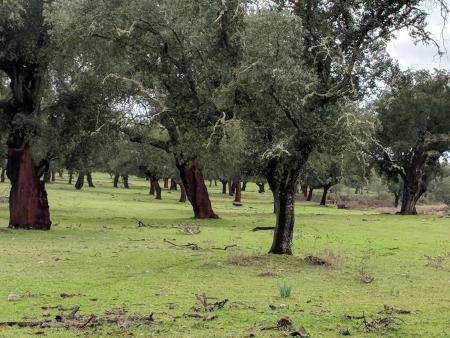
Objective:
Cork is a non-timber forest product of great importance due to its excellent characteristics in terms of insulation, elasticity and sustainability. Spain is the second world producer of cork after Portugal. Traditionally, debarking is carried out at intervals ranging from 9 to 14 years, depending on the area. However, the growth of the cork is not constant over the life of the tree, so uneven debarking intervals may be advisable. Despite its economic importance, no silvicultural schedules exist which are based on optimizing the profitability of these stands. This factsheet provides guidelines for the management of cork oak stands when the aim is to optimize economic profitability.
Context:
Growth in cork calliper (cork thickness) does not depend on the site quality of the stand. Greater tree growth will mean a greater debarking surface, but not greater growth in cork calliper. In addition, cork growth is not constant over the entire tree rotation period, the amount of cork obtained in a debarking operation depending on the number of times the tree has been debarked previously. This implies that debarking operations may be more profitable when performed at uneven intervals. For the purposes of this study, the optimization of the silvicultural schedules of different cork oak stands was performed, seeking to maximize economic performance.
Contacts:
María Pasalodos, pasalodos.maria@inia.es
Timo Pukkala, pukkala.timo@uef.fi
Mariola Sánchez, msanchez@inia.es
Further information:
Pasalodos-Tato, M., Pukkala, T., Cañellas, I. et al. Optimizing the debarking and cutting schedule of cork oak stands. Annals of Forest Science 75, 61 (2018).
Tomé M, Coelho MB, Pereira H, Lopes F (1999) A management oriented growth and yield model for cork oak stands in Portugal. In: Amaro A, Tomé M (eds) Empirical and process-based models for forest tree and stand growth simulation. Edições Salamandra, Novas Tecnologias, Lisboa, pp 271–289